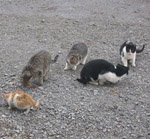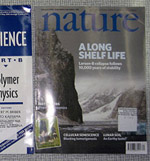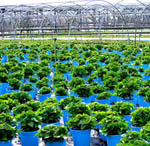Can island ecosystems recover from centuries of introduced rat invasion?
 Campbell Island south of New Zealand - affected by rat invasion but not part of the study.Invasive rats on islands pose one of the greatest threats to global biodiversity.
Campbell Island south of New Zealand - affected by rat invasion but not part of the study.Invasive rats on islands pose one of the greatest threats to global biodiversity.
By preying on seabirds in some of the biggest nesting colonies in the world, rats do more than just drive avian species towards extinction - they also disturb nutrient cycling derived from bird droppings and thereby impact plant communities and the larger food web.
Given the severity of the impacts from invasive rats and the fact that infestations have frequently persisted on islands for many centuries, the question arises whether it is even possible for ecosystems to recover after eradication and if so, how long it would take.
This question has practical significance because if recovery is impossible - i.e. affected ecosystems are locked indefinitely in some degraded alternative state - or it takes centuries as some scientists fear, then eradication efforts may not be worth their great expense.
A new study by Holly Jones from Yale University assuages these fears somewhat by showing that ecosystem recovery on islands after rat eradication does occur and the process takes mere decades - which is still a long time but better than taking centuries.
Jones examined ecosystem recovery on nine small islands off the coast of New Zealand in which the Polynesian rat (Ratus exulans) had been eradicated anywhere from 12 - 22 years prior. As controls, she also studied islands that had never been invaded and islands that were still infested with Polynesian rats.
Using stable isotope analysis, Jones measured seabird derived nitrogen entering different trophic levels by sampling soil, plants, and spiders. With each island serving as a sample point in time, she was able to develop a chronosequence of recovery.
Trends in the data "suggest a threshold effect where no recovery occurs for at least 15 years post eradication, followed by periods of rapid recovery in the subsequent years."
These findings correspond with the author's qualitative observation that sea birds were absent on currently invaded islands and then increased in density on eradicated islands with greater time since eradication.
Nevertheless a broader recovery of animal species and plant communities will likely take substantially longer. Jones writes,
"Island biodiversity and flora and faunal composition are often critically dependent on the nutrients that seabirds provide. Therefore, it may be necessary for ecosystem nutrient dynamics such as those measured here to recover their preinvasion levels before slower responding variables are able to recover."
--by Rob Goldstein




 Birds
Birds
Reader Comments